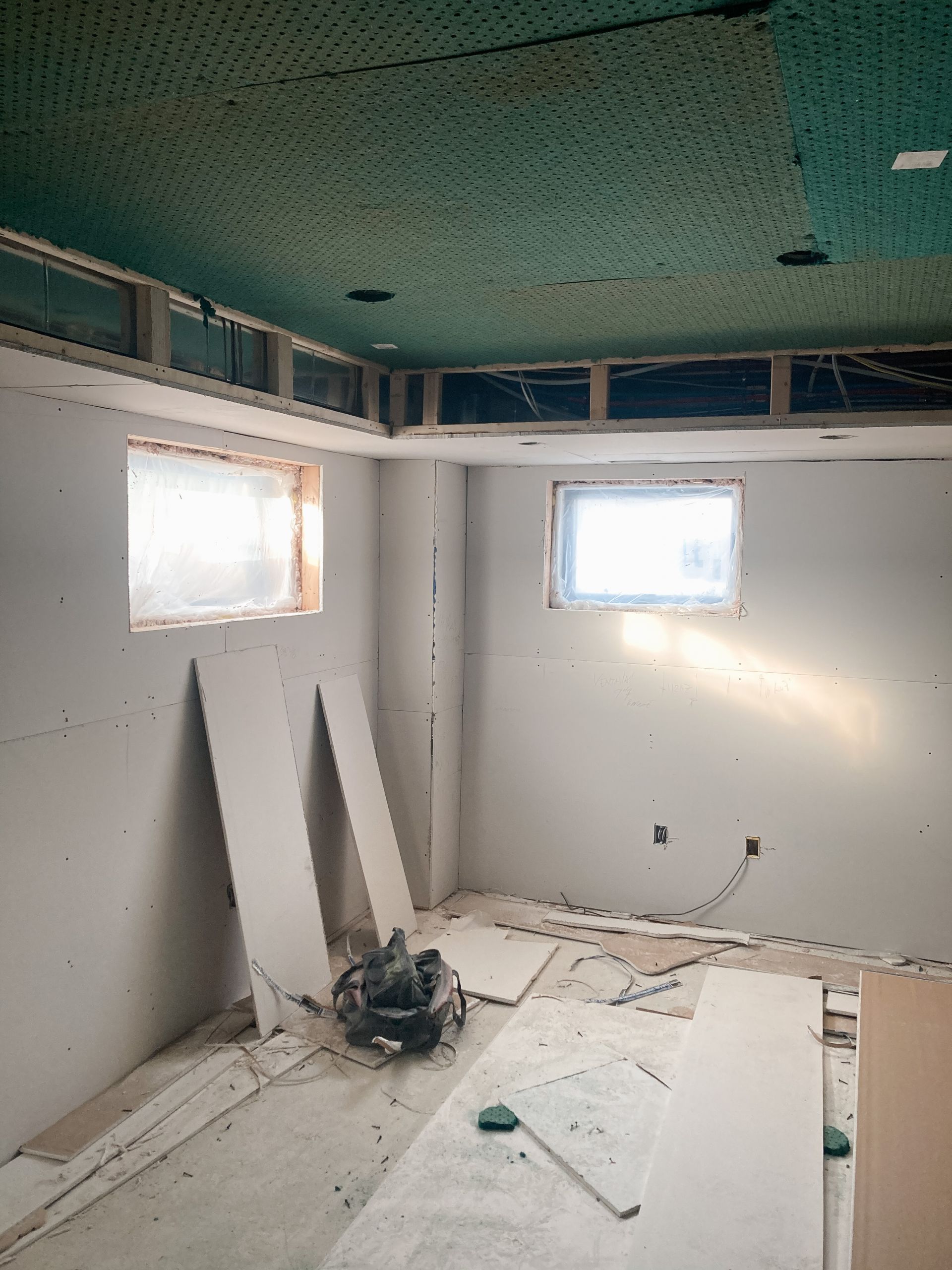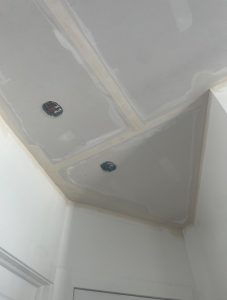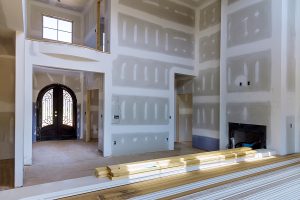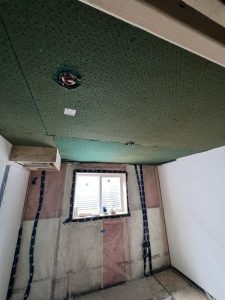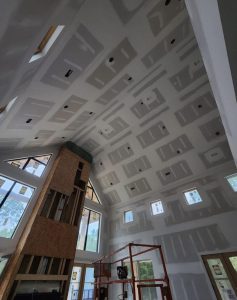As urban living spaces grow closer together and noise pollution becomes an increasing concern, the need for effective soundproofing solutions has never been greater. Soundproofing not only enhances privacy but also improves the overall quality of life by reducing unwanted noise. In recent years, innovations in drywall technologies have significantly advanced, offering new solutions that are both efficient and cost-effective. This article explores the latest developments in drywall soundproofing, highlighting the materials, techniques, and future trends that are shaping the industry.
Understanding the Basics of Drywall Soundproofing
Drywall, also known as gypsum board, has been a staple in construction for decades. Its primary function is to provide a smooth surface for walls and ceilings, but it also plays a crucial role in soundproofing. Traditional drywall helps reduce sound transmission due to its mass and density, which dampens sound waves. However, as noise levels increase in urban areas, there is a growing demand for drywall solutions that offer superior soundproofing capabilities.
Soundproofing effectiveness is often measured by the Sound Transmission Class (STC) rating, which indicates how well a building partition attenuates airborne sound. Higher STC ratings mean better soundproofing. Standard drywall typically has an STC rating between 30 and 34, but innovative technologies are pushing these numbers significantly higher.
New Materials and Composites
Mass Loaded Vinyl (MLV): Mass Loaded Vinyl is a dense, flexible material used to enhance the soundproofing capabilities of drywall. It can be installed between layers of drywall, adding mass and reducing sound transmission. Recent innovations have led to MLV being incorporated directly into drywall panels, streamlining the installation process and improving overall sound attenuation. MLV is especially effective in blocking low-frequency sounds, making it ideal for home theaters or music studios.
Gypsum-Based Composites: Advanced gypsum composites are designed to improve the soundproofing properties of traditional drywall. These composites often include additives such as fibers or viscoelastic polymers that enhance their acoustic performance. The use of viscoelastic materials helps in converting sound energy into heat, further reducing sound transmission. This combination results in drywall that not only blocks sound but also absorbs it, providing a dual approach to soundproofing.
Resilient Channels and Sound Clips: Resilient channels and sound clips are innovative mounting systems that decouple drywall from the framing structure. This decoupling prevents sound vibrations from traveling through the walls, significantly reducing noise transmission. Recent advancements have improved the design and materials used in these systems, making them more effective and easier to install. Using resilient channels with soundproof drywall can boost STC ratings by 10-15 points, offering substantial noise reduction.
Acoustic Panels and Sound-Dampening Sheets
High-Density Acoustic Panels: Acoustic panels made from high-density materials can be used in conjunction with drywall to enhance soundproofing. These panels are designed to absorb sound waves, reducing echoes and reverberation within a room. New developments have led to panels that are thinner and more effective, making them suitable for residential and commercial applications. When installed behind or over drywall, these panels provide an additional layer of soundproofing without taking up much space.
Viscoelastic Polymers: Viscoelastic polymers are materials that have both viscous and elastic properties. When integrated into drywall, they help in dissipating sound energy by converting it into heat. This process, known as constrained layer damping, significantly reduces sound transmission. Innovations in polymer technology have led to more efficient and durable materials that enhance the acoustic performance of drywall, making them a popular choice in sound-sensitive environments.
Smart Drywall Technologies
Nanotechnology: Nanotechnology is making its way into the construction industry, including drywall soundproofing. Nanomaterials can be added to drywall to improve its sound absorption and energy dissipation properties. These materials operate at a microscopic level, altering the molecular structure of the drywall to enhance its acoustic performance. While still in the experimental stages, nanotechnology holds promise for creating lightweight yet highly effective soundproofing solutions.
Graphene-Enhanced Drywall: Graphene, a single layer of carbon atoms arranged in a two-dimensional lattice, is known for its exceptional strength and conductivity. Recent research has explored the integration of graphene into drywall to enhance its soundproofing capabilities. Graphene’s unique properties allow it to absorb and dissipate sound waves more effectively than traditional materials. As research progresses, graphene-enhanced drywall could become a revolutionary solution in the field of soundproofing.
Innovations in Installation Techniques
Prefabricated Soundproof Panels: Prefabricated panels are designed for quick and efficient installation, offering a convenient solution for soundproofing projects. These panels often incorporate multiple soundproofing materials, such as MLV and acoustic foam, into a single unit. The prefabricated nature of these panels ensures consistent quality and performance, reducing the time and effort required for installation. This innovation is particularly beneficial in commercial settings where time constraints are critical.
Modular Soundproofing Systems: Modular systems offer flexibility in design and installation, allowing for customized soundproofing solutions. These systems consist of interlocking panels that can be easily assembled and disassembled, making them ideal for spaces that require frequent reconfiguration. Recent advancements in modular technology have led to improved acoustic performance and aesthetic appeal, making them a popular choice in modern architecture.
Sustainability and Eco-Friendly Innovations
Recycled Materials in Soundproof Drywall: Sustainability is becoming a key consideration in the construction industry. Many manufacturers are now using recycled materials in the production of soundproof drywall, reducing environmental impact. These recycled materials often include post-consumer waste, such as paper and plastics, which are processed and incorporated into the drywall. This approach not only reduces landfill waste but also creates products that are just as effective as traditional drywall in soundproofing applications.
Biodegradable Acoustic Materials: Biodegradable materials are emerging as an eco-friendly alternative for soundproofing. These materials, derived from natural sources, decompose over time, reducing their environmental footprint. Innovations in biodegradable acoustics focus on using plant-based fibers and resins to create sound-absorbing panels that can be integrated with drywall. While still in the early stages, these materials offer a promising solution for sustainable construction.
Case Studies
Exploring real-world applications of innovative soundproofing drywall provides valuable insights into their effectiveness. One notable project involved the use of graphene-enhanced drywall in a commercial office building, resulting in a significant reduction in noise levels and improved employee productivity. Another case study highlighted the use of prefabricated soundproof panels in a high-rise apartment complex, providing residents with enhanced privacy and comfort.
Future Trends in Drywall Soundproofing
As technology continues to advance, several trends are shaping the future of drywall soundproofing:
Integration of Artificial Intelligence (AI): AI is poised to play a significant role in the development of new soundproofing materials. Machine learning algorithms can analyze acoustic data and optimize material compositions for improved sound absorption and transmission loss. This technology could lead to the creation of smart drywall that adapts to changing acoustic environments, providing optimal soundproofing at all times.
Development of Lightweight Materials: There is a growing demand for lightweight soundproofing materials that do not compromise on performance. Researchers are exploring the use of aerogels and other advanced materials that offer high acoustic insulation with minimal weight. These materials could revolutionize the construction industry by reducing structural loads and simplifying installation.
Focus on Health and Wellness: As awareness of the impact of noise on health increases, soundproofing is becoming a priority in wellness-focused construction. Future innovations may include drywall that not only reduces noise but also improves indoor air quality and contributes to a healthier living environment.
Conclusion
Innovations in drywall soundproofing are rapidly advancing, driven by the need for effective solutions in an increasingly noisy world. From new materials and installation techniques to sustainable practices and future trends, the landscape of soundproofing technology is evolving. These advancements not only improve the acoustic performance of buildings but also enhance the quality of life for occupants. As research and development continue, the future of drywall soundproofing looks promising, with exciting possibilities on the horizon.
Additional Resources
For those interested in learning more about innovative soundproofing technologies, consider exploring the following resources:
Books:
- “The Soundproof Home” by Michael Jay
- “Acoustic Design and Noise Control” by Michael Rettinger
Websites:
Videos:
- “Innovative Soundproofing Techniques” on YouTube
- “The Science of Soundproofing” on TEDx Talks
These resources provide a deeper dive into the principles and applications of soundproofing, offering valuable insights for professionals and DIY enthusiasts alike.

